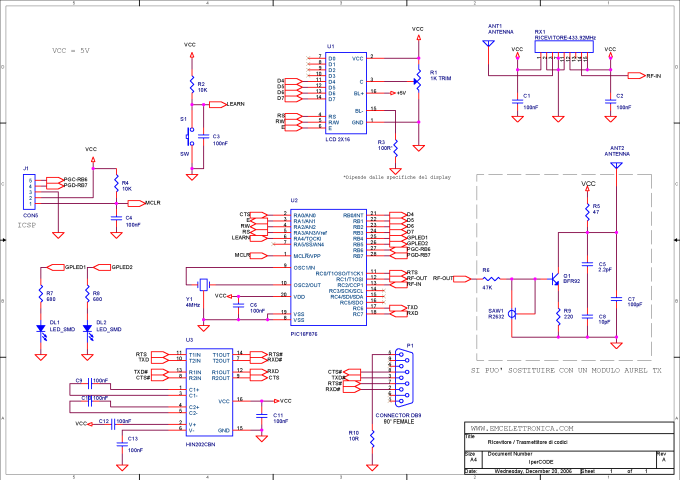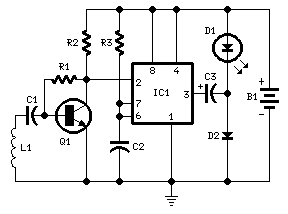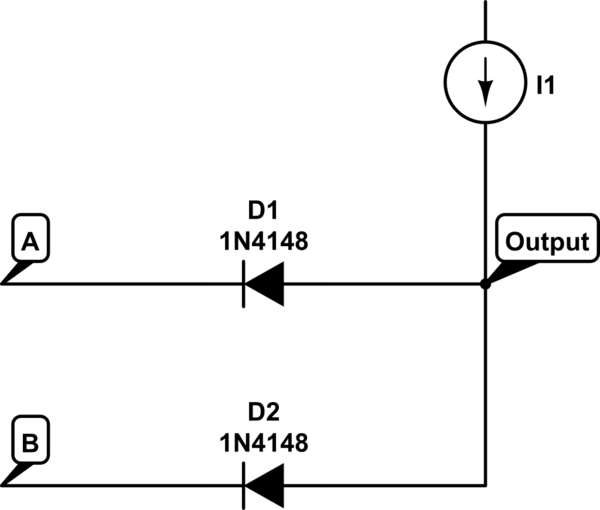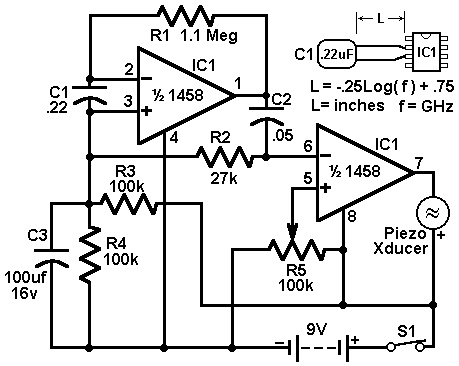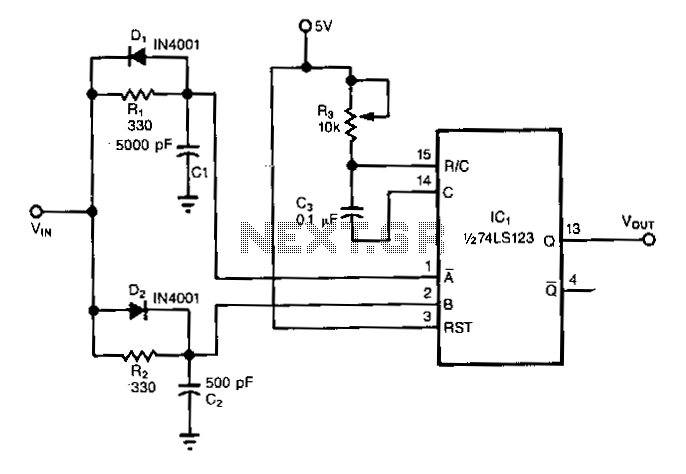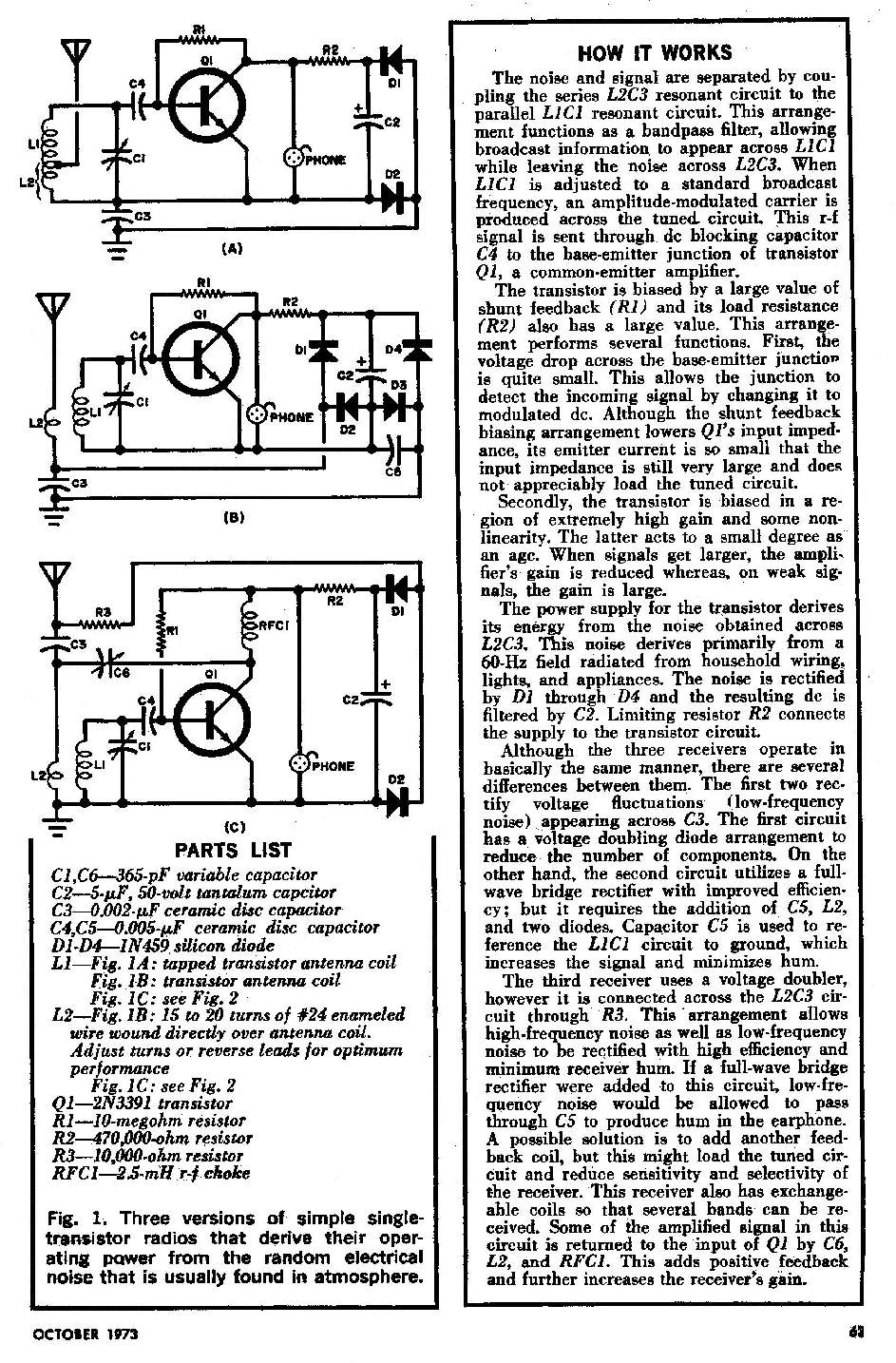
Metal detector using radio frequency
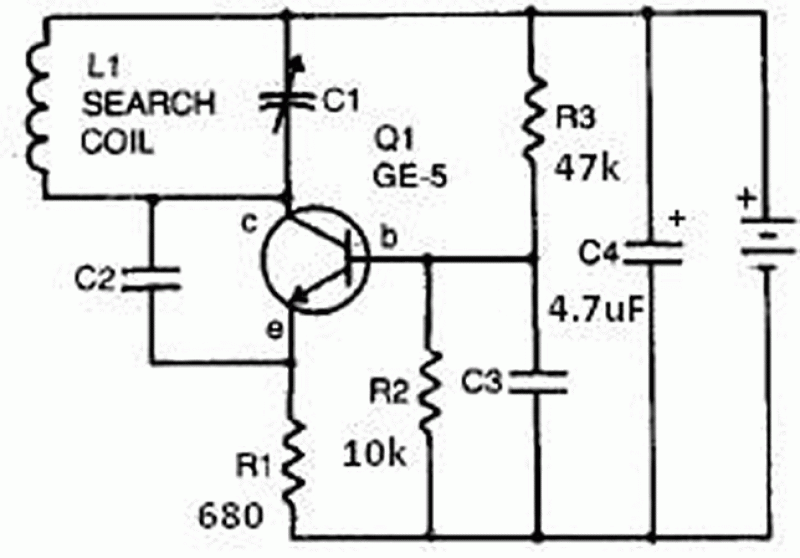
This metal detector schematic circuit is based on a transistor radio as a detector. This metal detector is entirely different from other metal detectors because this circuit does not have a speaker. With the radio tuned to a weak station, the variable capacitor C1 must be adjusted until the locator oscillator beats against the received signal. If metal is detected, the inductance of the L1 coil changes, altering the frequency of the locator oscillator, which results in a change in the beat tone of the radio. The L1 search coil of the metal detector circuit must have 18 turns of 0.65 mm enameled wire wound on a 4-inch diameter support. This metal detector circuit requires a 9-volt power supply (DC) or a 9-volt battery. The Q1 transistor can be an RCA SK3011 NPN transistor or an equivalent type, and all resistors need to be ½ watt. The C1 capacitor is a variable capacitor with a value of 365 pF, C2 is a 100 pF silver mica capacitor, C3 is a 0.05 µF disc capacitor, and C4 is a 4.7 µF capacitor.
The described metal detector circuit utilizes a radio receiver as a primary detection mechanism, distinguishing it from conventional metal detectors that typically employ audio output for indication. The operational principle hinges on the interaction between the radio's tuner and the locator oscillator, which is affected by the presence of metal. The circuit configuration allows for the detection of metal objects through frequency modulation, where the inductance of the L1 coil plays a crucial role.
The L1 coil, composed of 18 turns of 0.65 mm enameled wire, serves as the search coil for the metal detector. The choice of wire gauge and the number of turns is critical, as it directly influences the sensitivity and detection range of the device. The coil is wound on a 4-inch diameter support, ensuring optimal performance for detecting various metal types.
Powering the circuit requires a stable 9-volt DC supply, which can be sourced from either a battery or an external power supply. This voltage level is suitable for the components used, particularly the Q1 transistor, which can be replaced with an equivalent NPN transistor if necessary. The circuit components, including the resistors, are specified to be ½ watt to ensure they can handle the power without overheating.
Capacitance values are equally important, with C1 acting as a variable capacitor that allows for fine-tuning of the circuit's sensitivity to metal detection. The inclusion of C2, a 100 pF silver mica capacitor, C3, a 0.05 µF disc capacitor, and C4, a 4.7 µF capacitor, contributes to the overall stability and performance of the oscillator circuit, ensuring reliable operation.
Overall, this metal detector design presents a unique approach to metal detection, leveraging the principles of radio frequency modulation and providing a compact, efficient solution for identifying metallic objects.This metal detector schematic circuit is based on a transistor radio as an detector .This metal detector is total different that other metal detectors, because this circuit doesn't have a speaker . With the radio tuned to a weak station you must adjust the variable capacitor C1 until the locator oscillator beats against the received signal .
If a metal is detected the inductance of the L1 coil is changed , changing the frequency of the locator oscillator’s , resulting a change in the beat tone radio .
🔗 External reference
The described metal detector circuit utilizes a radio receiver as a primary detection mechanism, distinguishing it from conventional metal detectors that typically employ audio output for indication. The operational principle hinges on the interaction between the radio's tuner and the locator oscillator, which is affected by the presence of metal. The circuit configuration allows for the detection of metal objects through frequency modulation, where the inductance of the L1 coil plays a crucial role.
The L1 coil, composed of 18 turns of 0.65 mm enameled wire, serves as the search coil for the metal detector. The choice of wire gauge and the number of turns is critical, as it directly influences the sensitivity and detection range of the device. The coil is wound on a 4-inch diameter support, ensuring optimal performance for detecting various metal types.
Powering the circuit requires a stable 9-volt DC supply, which can be sourced from either a battery or an external power supply. This voltage level is suitable for the components used, particularly the Q1 transistor, which can be replaced with an equivalent NPN transistor if necessary. The circuit components, including the resistors, are specified to be ½ watt to ensure they can handle the power without overheating.
Capacitance values are equally important, with C1 acting as a variable capacitor that allows for fine-tuning of the circuit's sensitivity to metal detection. The inclusion of C2, a 100 pF silver mica capacitor, C3, a 0.05 µF disc capacitor, and C4, a 4.7 µF capacitor, contributes to the overall stability and performance of the oscillator circuit, ensuring reliable operation.
Overall, this metal detector design presents a unique approach to metal detection, leveraging the principles of radio frequency modulation and providing a compact, efficient solution for identifying metallic objects.This metal detector schematic circuit is based on a transistor radio as an detector .This metal detector is total different that other metal detectors, because this circuit doesn't have a speaker . With the radio tuned to a weak station you must adjust the variable capacitor C1 until the locator oscillator beats against the received signal .
If a metal is detected the inductance of the L1 coil is changed , changing the frequency of the locator oscillator’s , resulting a change in the beat tone radio .
The L1 search coil of the metal detector circuit must have 18 turns from a 0.65 mm enameled wire scrambled on a 4 inch diameter support . This metal detector circuit needs to be powered using a 9 volts power supply ( DC) or a 9 volts battery .
The Q1 transistor can be RCA SK3011 npn transistor or equivalent type and all resistors need to be ½ watts . The C1 capacitor is a variable capacitor with a value of 365 pF , C2 is a 100pF silver mica capacitor , C3 is a 0.05 uF disc capacitor and the C4 is a 4.7 uF capacitor .
🔗 External reference
